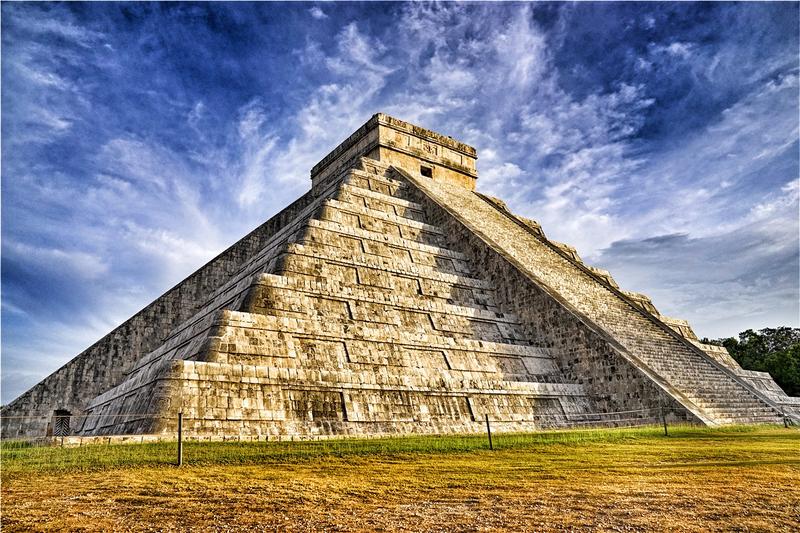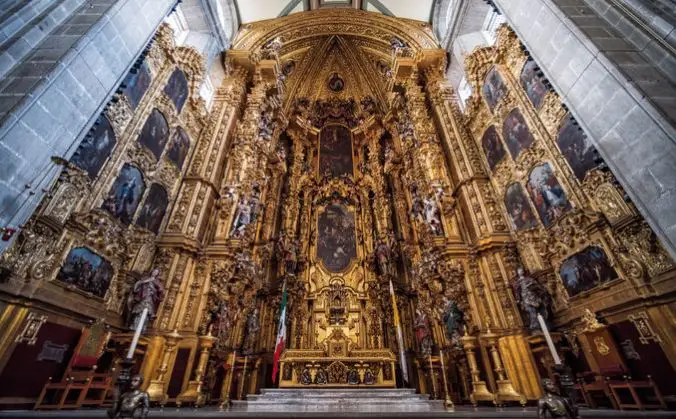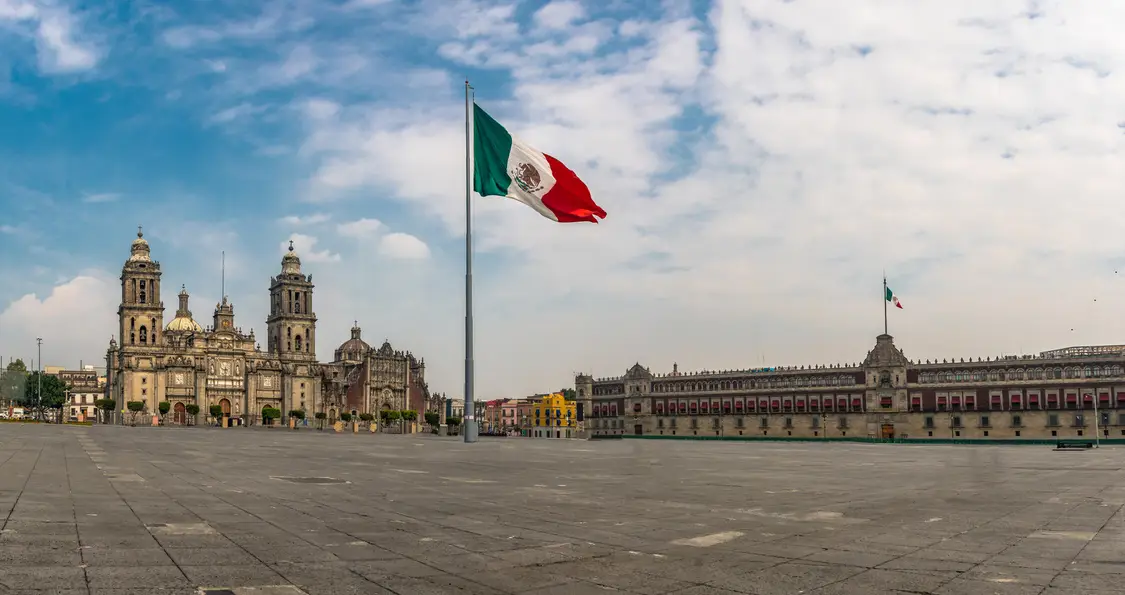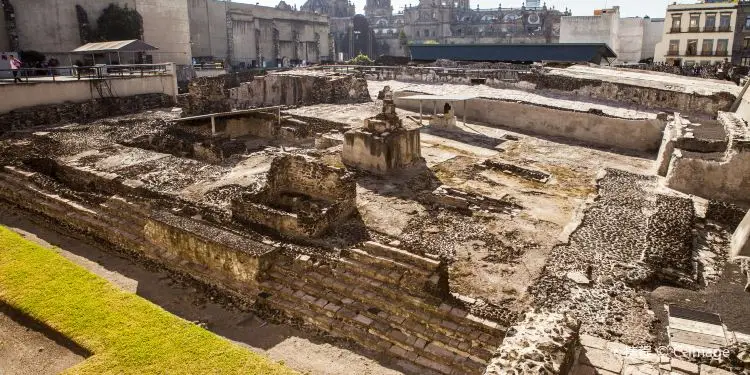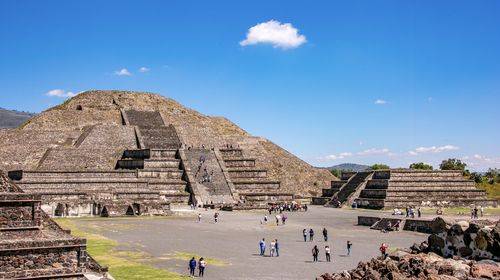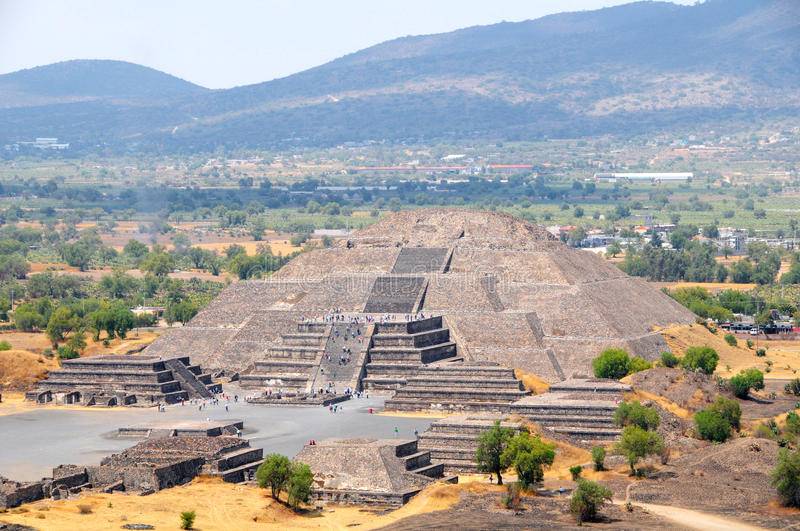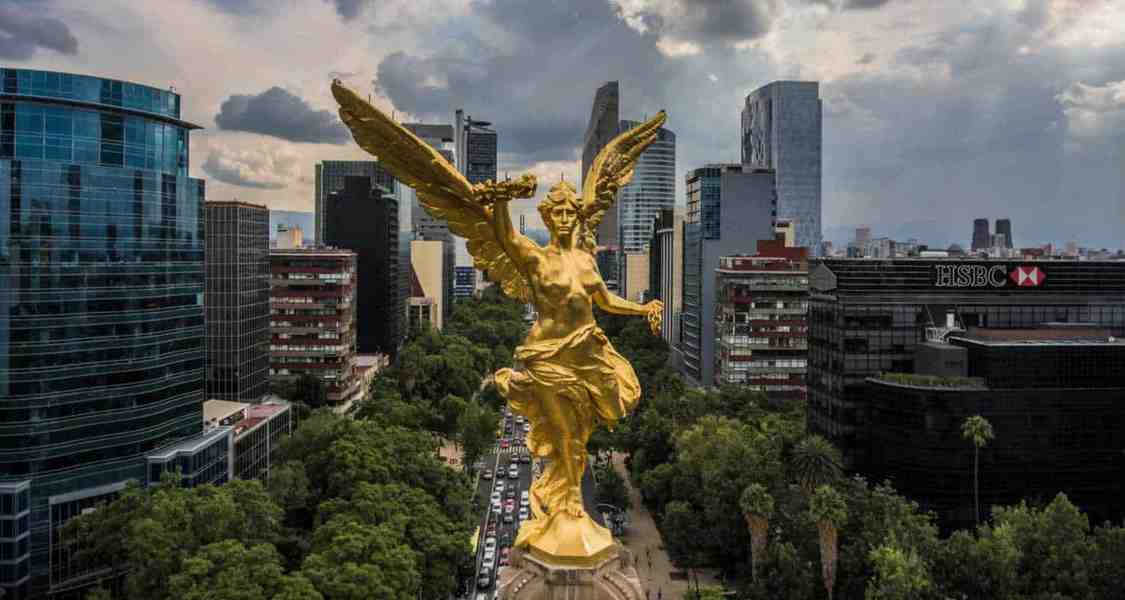The Mexico City Metropolitan Cathedral (La Catedral de Mexico) is the largest and most important Catholic church in Mexico, and one of the most renowned churches in the Americas. It is located on the north side of Zócalo Square in Mexico City. Construction began in 1573 and was officially completed after 1823, taking a total of 250 years, making it a significant landmark in the architectural history of the Americas. Our first stop was this most famous church in Mexico.
This is the heart of Mexico City. Zócalo means 'base,' as the large independence monument that was planned to be built here only had its base completed. It measures 220 meters from north to south and 240 meters from east to west, making it one of the largest squares in the world. On the east side is the National Palace (Palacio Nacional), to the north is the Metropolitan Cathedral (Catedral Metropolitana), to the south is the city government office, and on the west side, the Portal de Mercaderes arcade is flanked by jewelry stores and luxury hotels. This is a great starting point for exploring Mexico City.
The Aztecs believed this place was the center of the world. In 1521, the Spanish destroyed it. A Catholic cathedral was immediately built afterward. Over the centuries, the Great Temple was almost forgotten. In 1978, an electrician accidentally discovered part of the statue of the goddess Coyolxauhqui in a large stone. In the following years of archaeological excavations, stunning scenes emerged: a primitive Aztec temple and six smaller subsidiary temples were revealed to the world. Entering the Great Temple site, people can follow the route initially excavated by archaeologists, approaching it layer by layer.
The Teotihuacan site, where the pyramid is located, means 'City of the Gods' in Nahuatl. It was once the largest metropolis in the Americas. The pyramid is situated in the State of Mexico, 50 kilometers northeast of Mexico City, and is an important site of Indian civilization. Standing at the top of the pyramid and looking down at the ruins below, one can't help but imagine its former glory nearly two thousand years ago. Unlike the pyramids of ancient Egypt, the pyramids in Mexico were sacred altars for Indian rituals.
Located in the northern part of the ancient city of Teotihuacan, adjacent to the Pyramid of the Sun, it is a place for worshiping the moon god. Its architectural style is similar to that of the Pyramid of the Sun, but it is smaller in scale and was completed 200 years later. Although the Pyramid of the Moon is smaller in scale, it is intricately built, with over 200 steps, each with a different angle of inclination.
Angel of Independence
The Angel of Independence (also known as the Independence Monument), one of the landmarks of Mexico City, is located on a square on Reforma Avenue. It was built to commemorate the 100th anniversary of Mexico's independence and is named after the gilded bronze statue of the winged Victory goddess atop the monument. During the Beijing Olympics, a model of the Angel statue was also exhibited in Beijing. The Angel statue is 6.7 meters high and weighs 7 tons. In her right hand, she holds a laurel wreath, and in her left hand, she holds a broken chain, symbolizing the complete breaking of the shackles of 300 years of Spanish colonial rule.
National Museum of Anthropology
The establishment of the National Museum of Anthropology in Mexico began with the discovery and preservation of the 'Sun Stone'. The 'Sun Stone' was an object of worship for the Aztecs. In 1520, when the Spaniards ravaged the Aztec capital, this object of worship was buried underground. It was not until 1790 that the Sun Stone was rediscovered. People excavated it from the ground and preserved and studied it as a precious historical and cultural heritage, marking the beginning of the activities of the Mexican Museum. The artifacts here are considered treasures among treasures, and many well-known artifacts can finally be seen in person. This museum is renowned worldwide.
This magnificent marble building is a sanctuary of Mexican culture and art, and it also houses one of the best concert halls in the world. Construction began in 1905 and took 30 years to complete. Here, you can not only appreciate the artworks of many renowned Mexican artists, but also enjoy various music, theater, dance performances, and exhibitions. The National Museum of Architecture on the 4th floor requires an additional fee.
